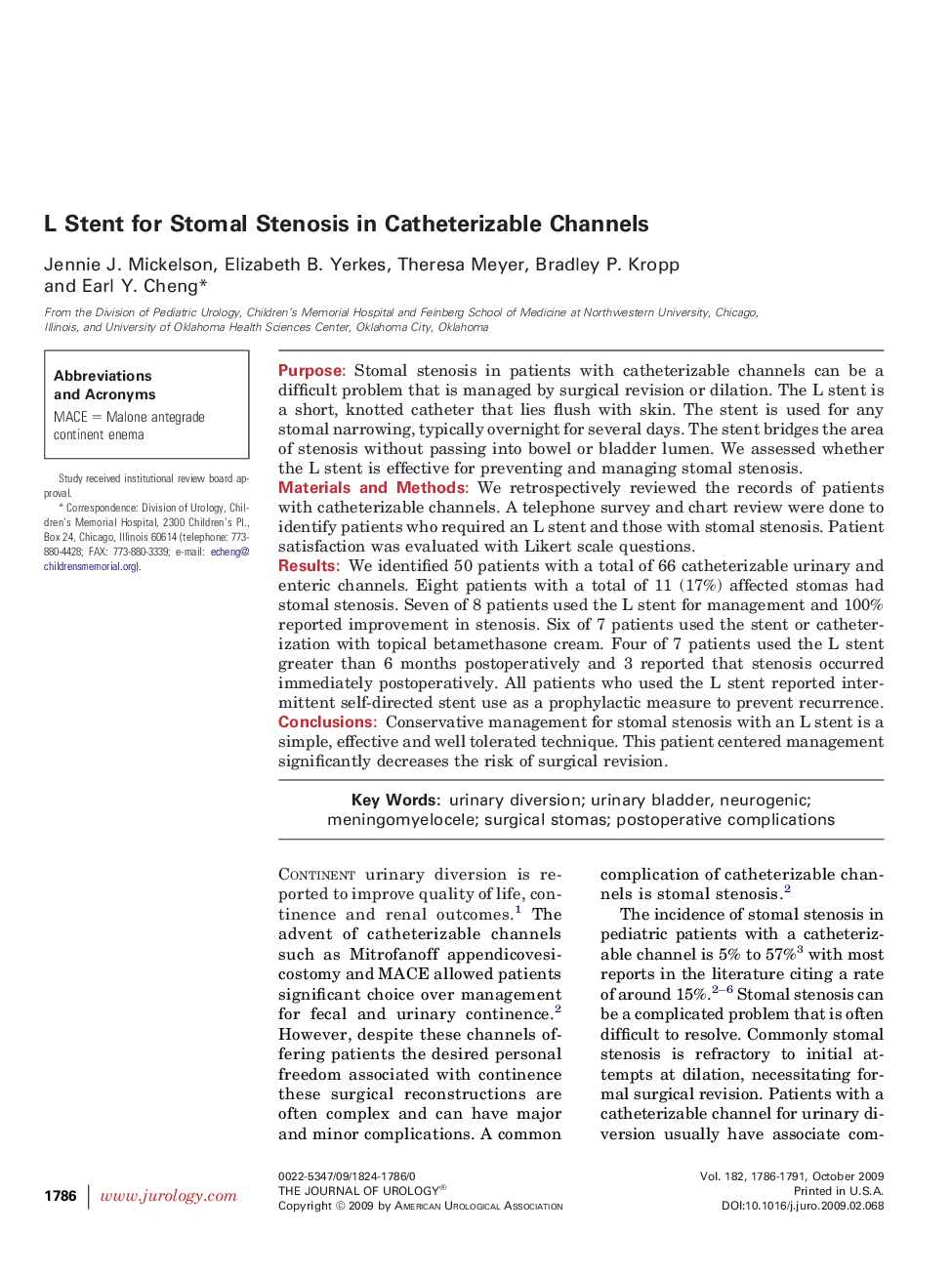| Article ID | Journal | Published Year | Pages | File Type |
|---|---|---|---|---|
| 3869345 | The Journal of Urology | 2009 | 6 Pages |
PurposeStomal stenosis in patients with catheterizable channels can be a difficult problem that is managed by surgical revision or dilation. The L stent is a short, knotted catheter that lies flush with skin. The stent is used for any stomal narrowing, typically overnight for several days. The stent bridges the area of stenosis without passing into bowel or bladder lumen. We assessed whether the L stent is effective for preventing and managing stomal stenosis.Materials and MethodsWe retrospectively reviewed the records of patients with catheterizable channels. A telephone survey and chart review were done to identify patients who required an L stent and those with stomal stenosis. Patient satisfaction was evaluated with Likert scale questions.ResultsWe identified 50 patients with a total of 66 catheterizable urinary and enteric channels. Eight patients with a total of 11 (17%) affected stomas had stomal stenosis. Seven of 8 patients used the L stent for management and 100% reported improvement in stenosis. Six of 7 patients used the stent or catheterization with topical betamethasone cream. Four of 7 patients used the L stent greater than 6 months postoperatively and 3 reported that stenosis occurred immediately postoperatively. All patients who used the L stent reported intermittent self-directed stent use as a prophylactic measure to prevent recurrence.ConclusionsConservative management for stomal stenosis with an L stent is a simple, effective and well tolerated technique. This patient centered management significantly decreases the risk of surgical revision.
